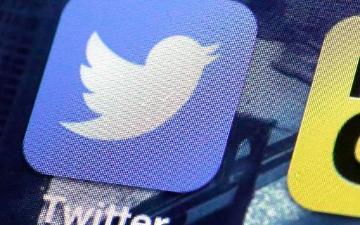
Irina Raicu (@iEthics) is the director of Internet Ethics at the Markkula Center for Applied Ethics. Views are her own.
As commentators debate whether the blame for disinformation and incitement should be placed on Facebook or Fox News, Twitter or OANN, YouTube or Newsmax, etc., we might reconsider the term “Trump media.”
Researchers have written about the feedback loops between various social media accounts (in particular the president’s) and media outlets. In November, for example, Renee DiResta described how
online influencers and the right-wing demi-media—intensely partisan outlets, such as One America News and Newsmax, that amplify ideas that bubble up from internet message boards—have steadfastly reassured Trump’s supporters that he will be reelected… The president himself, while tweeting about how the election was being stolen, amplified accounts that touted OANN and Newsmax as places to find accurate reporting on the truth about his election victory.
Publishing claims that the president might want to hear (whether with any basis in fact or not) had become a way for some channels (and random individual social media users) to get themselves retweeted by the president and other “influencers.” In turn, the president’s tweets would be reported by other media channels, which would then be shared by people across social media platforms. Even debunking, if not done carefully, could help spread falsehoods (as a report titled “The Oxygen of Amplification” explains). And, of course, most media channels felt they were required to report on Trump’s tweets once he became president and used Twitter to float policy ideas, respond to critics and events, and spread disinformation.
All of the coverage would then lead to clicks, monetization, targeted advertising, data collection that enabled finely targeted election messaging and political advertising, and more stories and more “sharing.”
This feedback loop may indeed be described as “Trump media”—and, while it is not the same as social media, it has been reliant on the social media platforms. It could not have developed without them (and the choices made by their executives, their employees, their shareholders, their boards of directors). Twitter, as the president’s platform of choice, played a key role and set the tone by its lack of response.
The debate over whether Twitter should have, at least temporarily, suspended the president’s account had been raging for years. Back in 2017, for example, in one interview, the CEO of Twitter was asked directly whether there were any circumstances under which the company would suspend president Trump’s account. In a response that included the claim that the company held all of its users “to the same terms of service,” Jack Dorsey added, “ultimately we want to make sure that we’re guiding everyone toward better usage.”
Unfortunately, Twitter didn’t “guide” the president of the United States “toward better usage.”
More than three years later, after losing the presidential election, on January 6, 2021, at a rally that had been heavily promoted by the president on Twitter and livestreamed on Twitter, Trump called on those present to walk to the Capitol to “try to give [the “weak Republicans,” as he put it] the kind of pride and boldness they need to take back our country.” Soon after, a mob of Trump supporters broke into the U.S. Capitol and temporarily stopped the lawmakers from certifying the election of president-elect Biden. President Trump then tweeted five more times before Twitter imposed a 12-hour suspension on his account, requiring him to delete three of the recent tweets. At 2 a.m., the president’s account deleted the three tweets. The suspension was then lifted, and by the afternoon of January 7, the president was tweeting again. On the 8th, after a review of the latest posts, Twitter announced that it had “permanently suspended” the president’s account (and subsequently suspended additional accounts when the president tried to tweet through them).
The whole episode begs the question of what might have happened had Twitter chosen to temporarily suspend Donald Trump, perhaps repeatedly, over the years.
For some time now, reportedly, president Trump has been considering developing a platform of his own. Perhaps he will simply add/license his name to an already existing platform, the way he has done in other contexts. But the term “Trump media” should not really be applied to a new (or rebranded) media channel or social media company. It should refer to the system of incentives and imbalances of power that have led to the online ecosystem that we have now.
As Conor Friedersdorf commented in The Atlantic back in 2018, in an article that detailed the roles played by both media and social media channels in the rise of Donald Trump as a political figure, “improving on the status quo isn’t so much a matter of adding more gatekeeping to the Internet as it is changing the incentives and behavior of the gatekeepers who are presently designing it.” We need both new laws and new conversations about ethical norms. Without them, the disinformation, polarization, and resulting violence will continue, even after the inauguration of a new administration. We need to change the incentives and behavior that have led to the Trump media.
